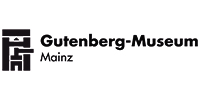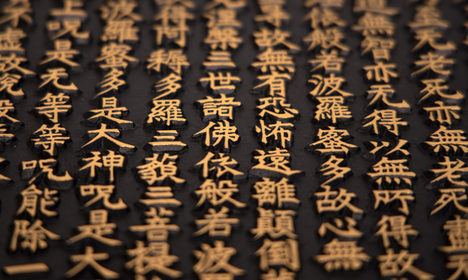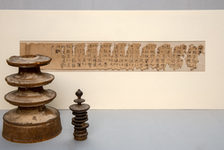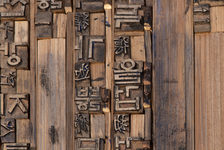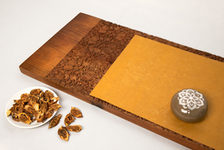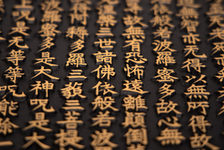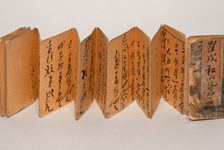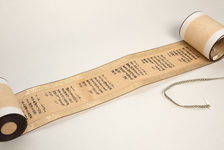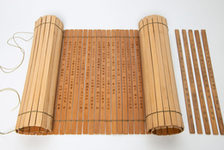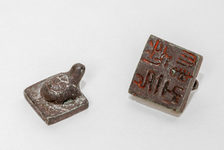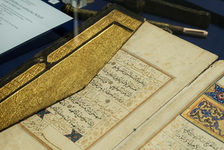East Asia and Islam
The Gutenberg Museum owns a comprehensive collection of items pertaining to the print and script culture of East Asia and Islam. Next to its exceptional exhibits of the history of European books and printing it can therefore also boast important exhibits originating outside of Europe.
China, Korea, and Japan – The East Asia section
Many generous bestowals and permanent loan items from our Chinese, Korean, and Japanese partner museums present the extensive scope of book, print and script art in eastern Asia.
As printing with movable letters, albeit with a very different motivation and method, was invented in China long before Gutenberg and applied in Korea with a different process, these historical items are of very special importance at the Gutenberg Museum and thus the "cradle of European letterpress printing". They reveal parallel developments and show that the invention of printing with movable letters took place independently in East Asia and Europe.
China
The print samples contained in the museum's collection vividly present the development of the almost 1500-year history of Chinese printing. The museum owns a large number of wooden letter cases as well as Chinese composing wheels, another unique type of letter storage.
Highlights include the "Chinese composing circle", one of only five surviving specimens in the world, which was manufactured and used in Germany for composing and printing Chinese texts.
Korea
Special exhibits of this collection section include early original pages of books that were printed with metal letters and original Korean cast metal or wooden type.
The collection includes the earliest dated text printed with movable metal letters, a facsimile of the Jikji and its printing plates from the year 1377.
Japan
The Japanese section contains the "Dharani Sutra", dating back to 770. This makes it the oldest printed sheet in the Gutenberg Museum and one of the world's oldest prints. The collection also includes characteristic woodcuts by Utagawa Hiroshige (1797-1858), Katsushika Hokusai (1760-1849) and Utagawa Kunisada (1786-1865).
Items from the Islamic print and script culture
The Islam section shows a selection of examples highlighting the key stages of printing scripts in the Middle East. It illustrates the history of printing in the Islamic world, which is defined by a strong manuscript tradition and European influences. The collection focuses on objects and items of the art of printing, the book and script culture, primarily from the Ottoman Empire and Persia, as well as exhibits of the European art of printing Middle Eastern languages.
Important collection items
- Arabic block printing amulet with supplications and Quran quotes, printed with block printing on European paper (Egypt, 1st half of the 15th century.)
- First imperial permission by the Ottoman regent Sultan Ahmed II for printed Islamic works in Arabic script, 1729
- Arabic alphabet, in: Bernhard von Breydenbach, Peregrinatio in Terram Sanctam, Mainz 1486
- A thirtieth of the text of the Quran as a daily portion with fully gilded leather cover with flap (16th century.)
